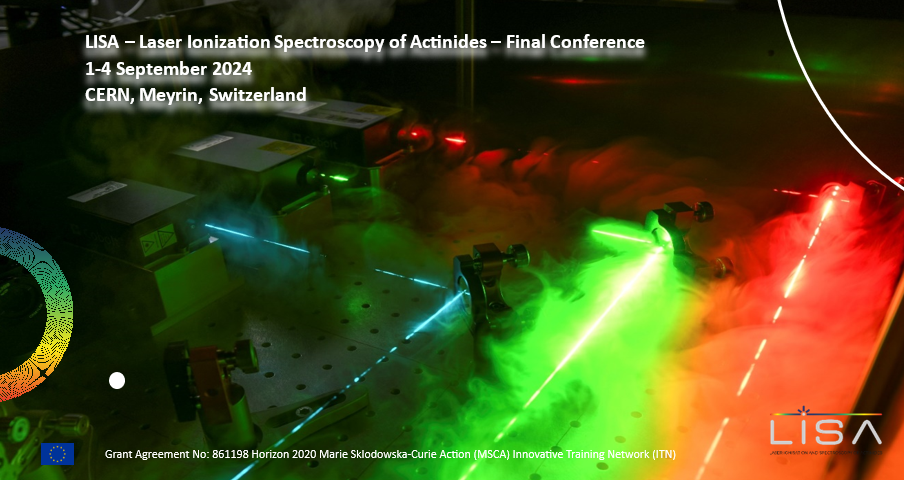Speaker
Description
Evidence of rich nuclear structure evolution has sparked renewed interest in the actinide region, prompting many research programs to study this area of the nuclide chart. Theoretical models predict the emergence of pronounced reflection-asymmetric shapes in the neutron-deficient isotopes of light actinide elements [1]. In addition, unique cases of interest are present such as the two well-known low energy isomers in
Th [2] and
U [3], the former proposed as a candidate for an optical based nuclear clock [4].
Within the LISA~(Laser Ionization and Spectroscopy of Actinides) framework, a research program aimed towards the study of the nuclear structure of light actinide elements has been implemented at the IGISOL facility [5], University of Jyväskylä Accelerator laboratory JYFL-ACCLAB. The research focuses on two objectives, the former connected to the production and study of neutron deficient actinides employing proton-induced fusion-evaporation reactions and decay spectroscopy techniques, the latter to the development of an isomeric beam of
U and its measurement via collinear laser spectroscopy.
Laser spectroscopic techniques act as a bridge between nuclear and atomic physics, providing access to information including the evolution of mean-square charge radii through the measurement of isotopic shifts in atomic transitions, in addition to nuclear magnetic dipole and electric quadrupole moments via the measurement of hyperfine structure [6]. Decay spectroscopy studies, on the other hand, provide a window to the measurement of decay modes of nuclei, as well as energies (Q-values), branching ratios, half-lives, excited states, spins and parities and so forth, basic nuclear structure information that is surprisingly lacking in the region of interest.
This contribution will present an overview of the experimental effort at the IGISOL facility, reporting on the results achieved during the LISA project, in addition to the outlook of the project and future developments to extend our knowledge in the actinide landscape.
